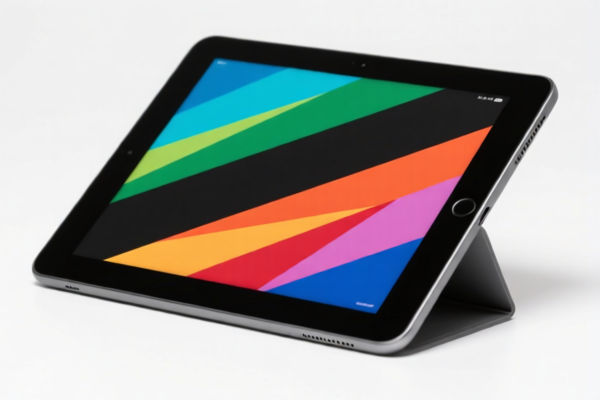| HS Code | Official Doc | Tariff Rate | Origin | Destination | Effective Date |
|---|---|---|---|---|---|
| 8304000000 | Doc | 33.9% | CN | US | 2025-05-12 |
| 9403704015 | Doc | 55.0% | CN | US | 2025-05-12 |
| 9403704031 | Doc | 55.0% | CN | US | 2025-05-12 |
| 9402900020 | Doc | 30.0% | CN | US | 2025-05-12 |
| 9402900010 | Doc | 30.0% | CN | US | 2025-05-12 |
| 3926903000 | Doc | 59.2% | CN | US | 2025-05-12 |
| 3926909905 | Doc | 42.8% | CN | US | 2025-05-12 |
| 3924104000 | Doc | 33.4% | CN | US | 2025-05-12 |
| 3924905650 | Doc | 40.9% | CN | US | 2025-05-12 |
| 9602005080 | Doc | 40.2% | CN | US | 2025-05-12 |
| 3503005550 | Doc | 2.8¢/kg + 3.8%+37.5% | CN | US | 2025-05-12 |
| 3503005550 | Doc | 2.8¢/kg + 3.8%+37.5% | CN | US | 2025-05-12 |
| 4823901000 | Doc | 55.0% | CN | US | 2025-05-12 |
| 4823902000 | Doc | 55.0% | CN | US | 2025-05-12 |
| 4821904000 | Doc | 55.0% | CN | US | 2025-05-12 |




Acrylic Table
An acrylic table is a table constructed primarily from acrylic plastic, also known as polymethyl methacrylate (PMMA). These tables are valued for their transparency, durability, and modern aesthetic.
Material
- Acrylic (PMMA): A synthetic polymer resembling glass in appearance, acrylic is lighter weight, more impact-resistant, and less prone to shattering than glass. It can be cast, extruded, or molded into various shapes. Different grades of acrylic exist, impacting clarity, UV resistance, and cost.
- Supporting Structures: While the tabletop is acrylic, the base and legs can be constructed from materials like metal (steel, stainless steel, aluminum), wood, or even acrylic itself.
Purpose & Function
Acrylic tables serve a broad range of functions, often prioritizing style and visual effect alongside practical use:
- Display Tables: Commonly used in retail settings to showcase products, particularly those benefiting from unobstructed visibility (jewelry, art, collectibles).
- Coffee Tables & Side Tables: Provide a contemporary look in living spaces. The transparency can create a sense of spaciousness.
- Dining Tables: Less common due to potential scratching, but used in modern settings.
- Console Tables: Offer a sleek and minimalist aesthetic.
- Bar Tables: Provide a modern, clean look.
- Work Surfaces: Used in laboratories or studios where visibility is important.
Usage Scenarios
- Residential: Living rooms, dining rooms, bedrooms, patios.
- Commercial: Retail stores, art galleries, museums, restaurants, bars, hotels, offices, trade show booths.
- Institutional: Schools, hospitals, laboratories.
Common Types
- Clear Acrylic Tables: The most common type, showcasing the material’s transparency.
- Colored Acrylic Tables: Available in a wide range of colors, offering design flexibility.
- Frosted Acrylic Tables: Provide a semi-transparent, diffused look, obscuring visibility slightly.
- Acrylic Tables with Metal Bases: Combine the aesthetic of acrylic with the stability of metal.
- Acrylic Tables with Wooden Bases: Offer a contrast of materials, blending modern and traditional styles.
- Waterfall Acrylic Tables: Feature a tabletop that seamlessly extends down to form the base, creating a continuous curve.
- Custom Acrylic Tables: Designed to specific dimensions and shapes, often incorporating unique features like embedded lighting or storage.
Advantages
- Transparency: Allows light to pass through, creating an open and airy feel.
- Durability: More impact-resistant than glass.
- Lightweight: Easier to move and handle than glass or wood tables.
- Modern Aesthetic: Offers a sleek, contemporary look.
- Versatility: Can be molded into various shapes and colors.
- Easy to Clean: Can be cleaned with mild soap and water.
Disadvantages
- Scratch Sensitivity: Prone to scratching, requiring careful handling.
- Chemical Sensitivity: Can be damaged by certain chemicals.
- Cost: Generally more expensive than tables made from wood or glass.
- Potential for Cracking: While durable, acrylic can crack under extreme stress or impact.
Acrylic tables fall under furniture and articles thereof, typically made of plastics. Here's a breakdown of relevant HS codes based on the provided information:
- 9403704015: Furniture of plastics, of reinforced or laminated plastics, Other household. This code applies to acrylic tables intended for household use constructed from reinforced or laminated plastics. The total tax rate is 55.0%, comprised of a 0.0% base tariff and a 25.0% additional tariff, increasing to 30.0% after April 2, 2025.
- 9403704031: Furniture of plastics, of reinforced or laminated plastics, Other. This code also applies to acrylic tables made of reinforced or laminated plastics, but is a broader category than the 'household' specification of 9403704015. The total tax rate is 55.0%, comprised of a 0.0% base tariff and a 25.0% additional tariff, increasing to 30.0% after April 2, 2025.
- 3926903000: Other articles of plastics and articles of other materials of headings 3901 to 3914, Other: Parts for yachts or pleasure boats of heading 8903; parts of canoes, racing shells, pneumatic craft and pleasure boats which are not of a type designed to be principally used with motors or sails. If the acrylic table is a component part for a boat, this HS code may be applicable. The total tax rate is 59.2%, comprised of a 4.2% base tariff and a 25.0% additional tariff, increasing to 30.0% after April 2, 2025.
Explanation of HS Code Structure (based on provided reference):
- Chapter 94: Furniture; bedding, mattresses, support, stuffing and similar articles; lamps and lighting fittings, not elsewhere specified or included; mirror, not elsewhere specified or included; furniture articles and parts thereof.
- Chapter 39: Plastics and articles thereof.
- Heading 9403: Furniture of plastics.
- Heading 3926: Other articles of plastics and articles of other materials of headings 3901 to 3914.
- Subheading 940370: Furniture of plastics, of reinforced or laminated plastics.
- Subheading 392690: Other articles of plastics and articles of other materials of headings 3901 to 3914, Other.
Important Note: The additional tariff rates are subject to change. A 25.0% additional tariff is currently in effect, increasing to 30.0% after April 2, 2025, for certain plastic articles.
Customer Reviews
No reviews yet.